#Foraged
Explore tagged Tumblr posts
Text
The Wonder Of Foraging

Foraging is an ancient and magickal practice, allowing witches to deepen their bond with nature while gathering powerful herbs, plants, fungi and even bones for spells, potions, and rituals. This guide will help you safely and ethically harvest nature’s gifts while honoring the spirits of the land.
𖥞The Ethics of Foraging
Before you set out, follow these principles:
• Harvest Respectfully - Take only what you need, and never overharvest.
• Know Your Land - Learn the local laws and indigenous practices of the area.
• Ask Permission - Some witches seek permission from the plants or land spirits before harvesting.
• Leave No Trace - Avoid damaging the ecosystem and thank nature for its sacrifice.
𖥞Essential Foraging Tools
• A foraging basket or cloth bag
• A sharp knife or scissors for cutting herbs
• Gloves (for thorny or toxic plants)
• A field guide (or app) to identify plants and fungi
• A journal for noting magickal correspondences or general notes
𖥞Sacred Rituals & Offerings
• Thank the Spirits - Leave a small offering (water, crystals, trinkets, a song, or a prayer).
• Moon-Charged Foraging - Gather herbs under a full moon for extra potency.
• Wild Altar - Arrange collected items as an outdoor altar to honor nature.
𖥞Crafting with Your Foraged Finds
• Herbal Magick: Use dried herbs to dress candles or as offerings.
• Herbal Bundles: Dry herbs for smoke cleansing.
• Infused Oils: Steep plants in oil for anointing and spellwork.
• Herbal Incense: Crush dried herbs for loose incense burning on charcoal or craft your own cones/sticks.
• Tinctures & Teas: Brew magickal potions for healing and intention-setting.
• Spell Jars & Mojo Bags: Combine dried herbs with crystals and charms for long-lasting magic.

𖥞Harvesting Herbs for Drying
• Timing Matters - Gather herbs in the morning after the dew has dried but before the sun is too hot.
• Lunar Harvesting - For extra magical potency, harvest under a full or waxing moon.
• Use Sharp Tools - Cut herbs with scissors or a boline to avoid damaging the plant.
𖥞Methods of Drying Herbs
Hanging Method (Best for Sturdy Herbs)
• Gather small bundles of herbs and tie them with twine.
• Hang upside down in a dry, dark, well-ventilated space.
• Avoid direct sunlight, which can weaken magical properties.
Drying time: 1-3 weeks.
Flat Drying (For Delicate Leaves & Flowers)
• Spread herbs in a single layer on a mesh screen, paper towel, or cloth.
• Keep in a dark, dry place with good airflow.
Drying time: 5-10 days.
Oven Drying (For Quick Drying)
• Set the oven to the lowest temperature (around 100-150°F or 38-65°C).
• Place herbs on a baking sheet and leave the oven door slightly open.
• Check every 10-15 minutes to prevent burning.
Drying time: 1-2 hours.
Dehydrator Method (Efficient & Even Drying)
• Place herbs in a dehydrator at a low setting (95-115°F or 35-46°C).
• Dry until leaves crumble easily.
Drying time: 4-12 hours, depending on the herb.
𖥞Storing Dried Herbs
• Glass Jars: Store herbs in airtight glass jars, preferably tinted to block light.
• Labeling: Always label with the herb name and date of drying.
• Cool, Dark Storage: Keep herbs away from sunlight and moisture.
• Energetic Cleansing: Charge dried herbs with moonlight or crystals before use.

𖥞Herb Foraging Schedule (Midwest)
🌷Spring:
• Dandelion
• Stinging nettle
• Hemlock
• Violet
• Chickweed
• Foxglove
• Wild onion/garlic
• Wild lupine
• Milkweed
• Lilac
• Black raspberry
• Tulip
• Wild plum
• Spiderwort
• Basil
• Trillium
• Yarrow
• Knot weed
• Plantain
• Lemon balm
• Mint
• Chervil
• Chives
• Dill
• Burdock
• Oregano
• Locust
🌻Summer:
• Wild raspberry and blackberry
• Elderberry
• Mullien
• Nightshade
• Lavender
• Rosemary
• Sage
• Purple cornflower (echinacea)
• Goldenrod
• Wild bergamot
• Datura (Jimson weed)
• Gooseberry
• Monarda
• Chicory
• Wild carrot
• Lily
• Queen Anne's lace
• Cutleaf toothwort
• Mugwort
• Wormwood
• Rosehips
• Purslane
• Mulberry
• Pokeweed
• Bittersweet
• American mandrake
🍄Autumn:
• Acorns
• Buckeyes
• Burdock root
• Hawthorn berries
• Pine needles
• Poison sumac
• White snake root
• Garlic mustard
• Black walnut
• Pawpaw
• Shagbark hickory
• Persimmon
• Witch hazel
• Juniper berries
• Cat tails
• Mushrooms
❄️Winter:
• Beech nuts
• Pine nuts
• Chestnuts
• Pinecones

𖥞Foraging Bones
Foraging for animal bones is a sacred practice that connects witches to nature, death cycles, and spirit work. Whether for divination, spellwork, or ancestral veneration, ethically collecting bones requires respect and knowledge.
Where to Find Bones:
• Forests & Woodlands - Look near animal trails, under trees, or in dry areas.
• Riverbanks & Lakeshores - Water can wash up bones over time.
• Fields & Deserts - Open areas may have sun-bleached remains.
• Roadsides & Farmland - Unfortunately, roadkill can be a source, but always ensure it is safe and legal to collect.
Ethical & Legal Considerations:
• Respect the Dead - Offer gratitude or a small offering when taking bones.
• Check Local Laws - Some areas prohibit collecting certain animal remains.
• Leave No Trace - Do not disturb entire ecosystems while searching.
Cleaning & Preparing Bones:
• Dry Cleaning - Brush off dirt and debris.
• Water Soaking - Soak in warm water to loosen soft tissue (never use bleach!).
• Hydrogen Peroxide Bath - Use 3% peroxide to whiten and disinfect bones.
• Sun Drying - Leave in the sun for a few days for natural purification.
Magickal Uses for Bones:
• Divination - Use small bones in casting (Osteomancy).
• Altars & Ancestral Work - Honor spirits with bone offerings.
• Talismans & Charms - Carry bones for protection and strength.
• Crafting Tools - Use bones for wands, runes, or ritual tools.
Foraging is an essential skill for a witch, as it deepens their connection with nature and provides access to fresh, potent ingredients for spells, potions, and rituals. Wild herbs, roots, and flowers carry strong natural energies that enhance magickal workings in ways store-bought materials cannot. Understanding the land and its seasonal growth also fosters self-sufficiency and sustainability, aligning a witch’s practice with the cycles of the Earth. Additionally, foraging strengthens intuition and knowledge of plant properties, ensuring safe and ethical use of nature’s offerings.
By embracing foraging as part of your craft, you not only strengthen your magickal practice but also develop a deep, sacred relationship with the land. You will discover that it to be its own spiritual practice, a communion with nature, and a fantastic way to spend your day. Happy foraging, witches!

#foraging#foragecore#foragers#forage#Foraged#witch#magick#lefthandpath#witchcraft#witchblr#witch community#eclectic witch#eclectic#pagan#natural herbs#natural magic#nature spirits#nature#bone collecting#animal bones#hiking#cottage witch#green witch#herbs#herbalism#herbal witch#genius loci#herbal#herbal magic#green witchcraft
156 notes
·
View notes
Text

[ID: A dish of greens garnished with red onion and red chili, with a flatbread in the background. End ID]
Uttar Pradesh mix saag with wild greens
The Hindi "साग," "sāg" (Urdu: "ساگ") is a word meaning "potherb, vegetable, greens." It is ultimately derived from the Sanskrit "शाक" ("śāka"), which also has reflexes in the Bengali "শাক" ("śak") and the Punjabi "ਸਾਗ" ("sāg"), among others.
Saag dishes are made from fried or boiled green herbs and vegetables, flavoured with aromatics, spices, and chili peppers. They are typically named for the type of greens used: for example, सरसों का साग ("sarsõ kā sāg") is made with sarson, or mustard greens; बिच्छू बूटी का साग ("bicchū būṭī kā sāg") is made with the greens of stinging nettles.
This recipe is for an Uttar-Pradesh-style "mix saag," which is of course made with a mixture of different greens. Most commonly included are spinach (पालक, palak), mustard greens (sarson or राई, rāī), lamb's quarters (बथुआ, bathua), fenugreek leaves (मेथी, methi), and chickpea leaves (चने के पत्ते, channa ke patte). Chilis, ginger, garlic, and coriander power make this dish complex, light, and fresh, while gur (jaggery) adds sweetness; corn flour, ghee, and mustard oil add richness of texture. Mix saag is often eaten with makka ki roti, a corn (maize) flatbread.
The greens for this recipe can be found at a south Asian grocery store, or you can use any mildly flavored greens. I used locally foraged lamb's quarters, garlic mustard, plantain, chickweed, common sowthistle, prickly sowthistle, and dwarf mallow.
Recipe under the cut!
Patreon | Paypal | Venmo
Ingredients
200g greens
1 red onion, diced
1 chunk (10g) ginger, minced
2-3 cloves (10g) garlic, minced
1 Tbsp vegetarian ghee, or non-dairy margarine
1 Tbsp mustard oil
2 dried red chilis, or 1 tsp Kashmiri chili powder
2 fresh green chilis, sliced
1 tsp coriander powder (optional)
40g (small handful) maize flour, to thicken
1-2 tsp jaggery, to taste
Salt to taste
Sliced red onion, to garnish

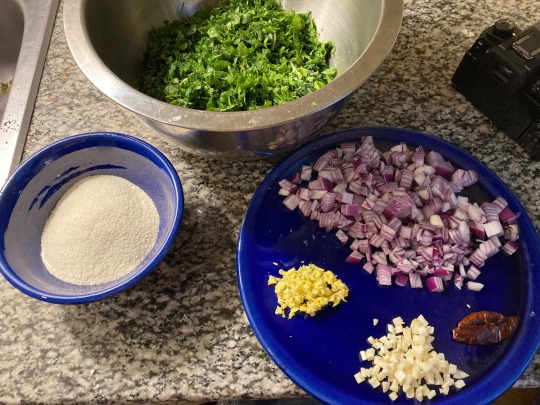
Instructions
Wash and chop greens. Boil in salted water for about 10 minutes, until tender. Drain. (This liquid can be used to make soup later, if it's not too bitter.)
Heat ghee and mustard oil in a pot on medium high. Add onion and cook for 5-8 minutes, until translucent.
Add garlic, ginger, and dried and fresh chilis and cook for about a minute, until fragrant.
Add coriander powder and chili powder and fry for 30 seconds, until fragrant.
Add jaggery and heat for a minute, until the sugar melts.
Add greens and mix to combine. Cook until wilted. Add water to cover and bring to a simmer.
Add corn flour and salt and mix until combined. Continue to simmer for 5 minutes to allow flavors to meld, or until desired consistency is reached. Taste and adjust salt.
Garnish with sliced red onion and serve hot with roti.
166 notes
·
View notes
Text
Hoping that the captions are easier to read this time! Trying to get better at editing and making these 😊 also I ordered a mic for voiceovers but I chose the wrong one because it sounds worse than just using my phone lol
Anyways - here’s to a year full of nature’s abundance 🍃
276 notes
·
View notes
Text









Today I found the chanterelle motherload 🍄🟫😈 and generally just had a lovely long walk in the forest 💛💚
#mushrooms#fungi#chanterelles#Golden chanterelles#smooth chanterelles#foraging#foraged#nature#naturecore#red eft#newt#eastern newt#salamander#amphibian#forest#forestcore#summer#summer 2024#august#august 2024#2024#finger lakes#upstate ny#upstate new york#creek#hiking#outdoors#western new york#western ny#new york state
116 notes
·
View notes
Text


Sustainably sources and one of a kind Oddity Mystery Boxes are available at multiple price points!
A great way to start a new collection, or refresh an existing cabinet of curiosities.
Boxes may include things like taxidermy, fossils and crystals, plant specimens, pelts and other animal products, bones, medical oddities, antiques, occult supplies, handmade talismans, shells, feathers, and an assortment of other strange and unusual oddities.
Packaged with intent, and always includes free extra surprises!
Instagram | Shop
#odditiesandcuriosities#gothic#oddities#curiosities#vulture culture#witchy#dark decor#taxidermy#gothic victorian#bone collector#deadwhenwemet#goblincore#forest witch#traditional witches#occult#macabre#nature witch#natural history#natural curiosities#gothic home#goth decor#hedge witch#foraged#corvidcore#curiosity cabinet#entomology#oddities for sale#oddity art#dead things in jars#bone reading
9 notes
·
View notes
Text

#cotw#chicken of the woods#mushrooms#foraging#mycology#woods#forest#nature#fungi#mushroom identification#wild food#foraged#my photo#outdoors
11 notes
·
View notes
Text
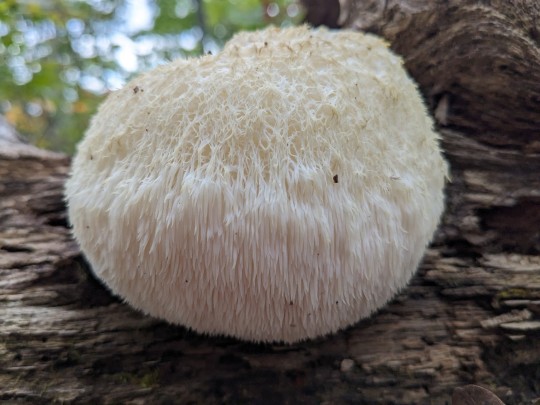
Lion's Mane Mushroom
Hericium erinaceus
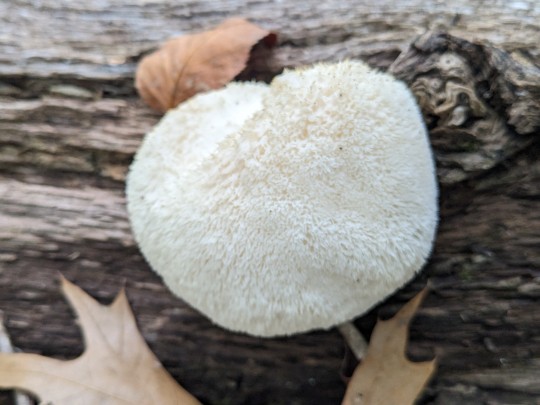

A wonderful surprise awaited us while on a hike. Lion's Mane has a very mild flavor and contains bioactive compounds that have been proven to improve brain health. Remember to always forage respectfully and sustainably.
Crawford County, Missouri, USA
Oct. 6th, 2023
Olivia R. Myers
@oliviarosaline
#foraging#foraged#mushroom hunting#foraged food#nature#mushrooms#woods#mushroom#mycology#exploring#hiking#lion's mane#lion's mane mushroom#medicinal mushrooms#medicinal#cottagecore#forestcore#forest floor#forest#forests#ozarks#Missouri ozarks#wild fungi#foraging mushrooms#amazing nature#beautiful nature#mushroom photography#fungi photography#wild mushrooms#hericium
24 notes
·
View notes
Text

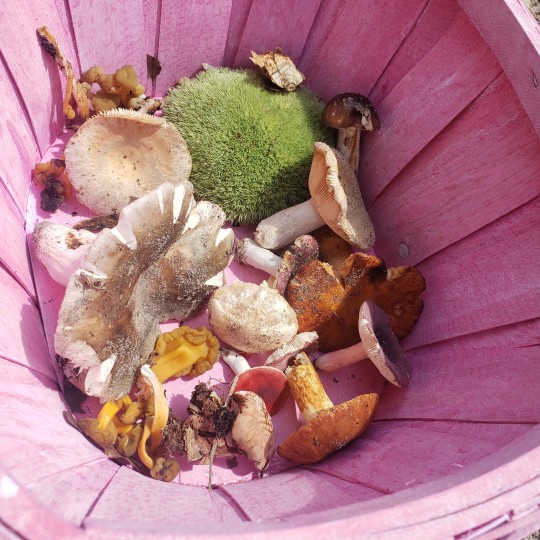
I went foraging a few days ago after rain. None of this was eaten, it was all chopped up and tossed into my compost to help break down my compost better. All but the moss, I gave that to a friend for her to use some buttermilk and spread it around her home! 🍄
#mushroom#mushrooms#mushroomcore#mushroom aesthetic#fungi#nature#naturecore#mossy forest#mossycore#moss#wild fungi#mushies#mushroom photography#mushyroom#foraging#foragers#foraged#mushroom picking#after rain#nature aesthetic#nature lovers#mycology#mushroom art#pink basket#gift baskets#nature witch#mushroom girl#colorful fungi#orange fungi#fungus
36 notes
·
View notes
Text
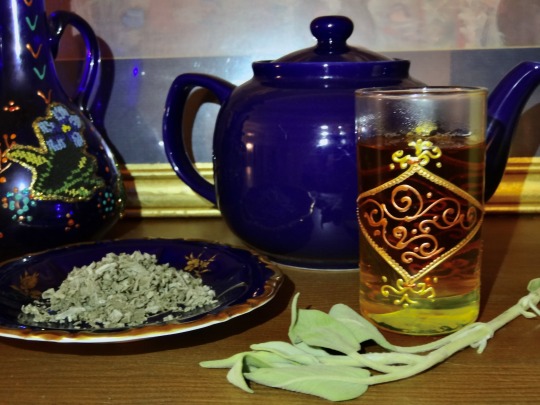
[ID: A Moroccan teaglass with a bundle of sage, a saucer of dried sage, a deep blue-purple teapot, and a Palestinian vase in the background. End ID]
شاي المريمية / Shay al-maryamiyya (Palestinian sage tea)
Palestinian sage is a common after-dinner beverage and digestive aid made from black tea and three-lobed wild sage (Salvia fruticosa syn. Salvia triloba L.). In the Levant, this variety of sage is known as "مَرْيَمِيَّة" ("maryamīyya") or, more dialectically, "مَرْمَرِيَّة" ("marmariyya").
Terminology and etymology
The term "maryamīyya" likely derives from the Aramaic "מרייא" ("marvā"), meaning "common sage" (Salvia officinalis). The modern form of the word in Arabic—as well as in Persian, in which "مریم گلی" ("maryam goli") is “sage” or "garden sage"—was also influenced by a folkloric association between sage and the مَرْيَم (Maryam) of the Bible (Mary, mother of Jesus). Dr. Tawfiq Kanaan, for example, says that Mary sat on a stone to rest after a walk in the hot summer sun, and used a few leaves from a sage plant to dry her forehead: this is how the plant got its pleasant scent, and why it is still named after Mary. The dialectical pronunciation "marmariyya" then arises through an assimilation of the second syllable to the first.
"Maryamīyya" is perhaps also related to the obsolete Arabic مَرْو ("marw"), meaning "fragrant herbs" [1]. This Arabic term is derived from the Aramaic מַרְוָא / ܡܲܪܘܵܐ ("marwā"), which refers to wild marjoram or za'tar (Origanum syriacum; syn. Origanum maru) and is related to words for fragrant herbage, marjoram, and grass (Ciancaglini; see also Aramäische Pflanzennamen, p. 193). The Aramaic is itself a borrowing from the southwest Middle Persian "𐭬𐭫𐭥𐭠" (transliterated: mlw'; pronounced /marw/) [2], which survives in several New Persian words: see for example "مرغ" ("margh"), "a species of grass of which animals are exceedingly fond"; and "مرو" ("marv"), "a fragrant herb." (Interestingly, the related Sanskrit मरुव "maruva" ultimately gives the English "marjoram" by way of Latin and Old French.)
[1] The term may also refer to the genus Maerua (to which it gives its name), and in particular the species Maerua crassifolia.
[2] See also Müller-Kessler, p. 10, and note 41 on p. 29; MacKenzie, p. 55.
Sage and Palestinian Culture
Three-lobed sage is one of the "most deeply rooted plants in the Palestinian traditional culture and ethnobotany," being the second-most-mentioned of all foraged plants (after za'tar) in a survey conducted in 2008. The connection of three-lobed sage to Maryam leads to its use in creating protective blessings at various rituals from birth until death; in the Galilee, it is burned to guard against the evil eye and to expel demons at births, weddings, and at the graves of holy people. When consumed, it is believed to help with many ailments including stomach complaints, eye diseases, and insomnia, and is used to treat livestock as well as humans.
Maryamiyya is not commonly grown as a garden herb in Palestine; rather, it is foraged from its wild range across the mountains of the West Bank, where it scents the air. Like za'atar and labna, using maryamiyya for culinary purposes is connected to Palestinian identity throughout all regions, with some people asserting that every Palestinian household must have some in stock.
Tea made with the addition of sage is perhaps the most popular herbal tea in Palestine, especially in the winter: though mint, chamomile, and aniseed are also commonly infused in water and drunk. Other varieties of sage grow in Palestine and are produced and exported by Palestinian farmers [1], but Gustaf Dalman noted in the early 20th century that three-lobed sage was the most important variety:
Of the spicy-smelling labiate flowers, which assume a significant role in the flora of Palestine, numerous sage varieties bloom in the spring. Among these the Salvia triloba, with violet flower heads on a tall shrub, is not the most colorful but is the best known, called in the north 'ēzaqān [عِيزَقَانْ] and in the south miryamīye, mēramīye thus connecting it with the Virgin Mary. (trans. Nadia Abdulhadi Sukhtian)
During the spring, sage leaves are collected and air-dried for use in tea throughout the whole year. Tea may also be made from fresh leaves, but some people consider dried to be superior. Dried maryamiyya leaves are purchased by Palestinian refugees and expatriates wherever they are. Food is thus tied to locality, memory, resistance, and terroir—a groundedness in land that considers aspects as diverse and interconnected as soil, climate, and politics. A concept of terroir in agriculture and cooking brings out how products "register[] origin and provenance."
[1] Today, the vast majority of Palestinian herb exports are to the United States, but Palestinian farmers are not able to export goods themselves—they rely on Israeli distributors and exporters, which cuts into their profits and curtails their autonomy.
Criminalizing Foraging
Ali-Shtayeh et al. noted in 2008 that the gathering of wild edible plants had been in decline in the Palestinian territories throughout preceding decades, with many young people lacking the cultural knowledge to identify and prepare wild plants. They mention several possible reasons for the decline, including an increase in intensive agriculture, improvement in national networks of roads, and the fact that some middle-aged people associate foraging with times of poverty. But we should also consider the fines, arrests, and potential imprisonment that Palestinians risk when foraging wild plants for food as a likely cause for the decline in the practice.
There are two strains of law relevant to the criminalization of foraging in "Israel" and the occupied Palestinian territories (the West Bank and Gaza: henceforth "OPT"). The first consists of primary laws which establish the right of representatives of the Israeli government to declare a plant to be a protected "natural value" (ערכי טבע), and lay out the maximum penalties people can be charged with for causing "harm" ("פג'עה") to a protected plant; the second comprises secondary declarations in the form of lists of which plants are considered protected.
The 1963 Natural Parks and Nature Reserve Law (חוק גנים לאומיים ושמורות טבע, תשכ"ג - 1963) belongs to the first strain. It empowered the Minister of Agriculture to declare a plant to be protected within "Israel," subject to the approval of a government council (ch. 5, 40-42); and declared that harming a plant was an offence punishable by up to three months' imprisonment (chapter 6).
In the text of the law, "harm" is specifically defined to include "picking," "קטיפה," and "gathering," "נטילה." No systematic distinction is established based on how much of the plant was harvested, and whether the plant was foraged for personal or commercial purposes. Nor is there any qualification of what qualities a plant should have to be considered "protected," or any obligation for the government to pursue or present scientific evidence that a given plant is overharvested.
In 1969, The Decree on the Protection of Nature (צו בדבר הגנה על הטבע) (Military Order no. 363) gave similar authority to the occupying military, and criminalized foraging in the OPT. Military orders are enforced by military courts, whereas offenders in "Israel" go through civil courts.
Several plants were already on the list of protected natural values at this time, but they were not commonly foraged for food. 1977 proved a signal year in this regard: with the "Proclamation of National Parks and Nature Reserves" [אכרזת גנים לאומיים ושמורות טבע (ערבי טבע י מוגנים), תשל״ח -1977], Minister of Agriculture Ariel Sharon (אריאל שרון) added za’tar ("אזוב מצוי") and maryamiyya ("מרוה משולשת") to the list. The inclusion of these plants, and especially za'tar, was more disastrous and insulting than previous bans on foraging had been. Za'tar, besides being a source of food and income for many poor or disabled Palestinians, has immense cultural significance in Palestine.
Arab Palestinians—and only Arabs—were arrested, fined, and even imprisoned, with no clear correspondence between the amount they had foraged and their sentencing. Most of the recorded court cases in "Israel" deal with za'tar, though court cases in legal databases show that Palestinians were also fined and tried for foraging maryamiyya (FN 38). An atmosphere of intimidation prevailed, with many habitual foragers feeling newly afraid to leave their homes.
In 1998, a new National Parks, Natural Reserves, National Sites and Memorial Sites Law [חוק גנים לאומיים, שמורות טבע, אתרים לאומיים ואתרי הנצחה, תשנ"ח-1998] replaced the prior National Parks law (of 1992, which had itself replaced the aforementioned 1963 law). It removed the necessity for an ecological council to approve the Minister's declaration of a "protected" status, and increaed the maximum prison time for a violation of the law to three years. Throughout all periods, however, the penalty usually imposed has been a fine.
Since the imposition of the harsher law, two notable updates have been made to the list of protected plants: the 2005 list of Protected Natural Assets) [אכרזת גנים לאומיים, שמורות טבע, אתרים לאומיים ואתרי הנצחה (ערכי טבע מוגנים), התשס״ה–2005] replaced the 1979 list, and added عَكُوب ('akoub; "עכובית הגלגל"), a culturally important and commonly foraged thistle. [1] Za'tar and maryamiyya remained on the list. The 2005 declaration also specifies that the species on the list are protected if they are wild, but not if they are cultivated (section 3). This provision allows Israeli farmers to profit from the farming and sale of za'tar.
The second notable update came in 2019: the Nature and Parks Authority (שרשות הטבע והגנים) announced that it would redact the absolute ban on harvesting za'tar, maramiyya, and 'akoub, instead setting a maximum allowable amount for household consumption and cracking down on the sale of these plants, rather than on foraging itself.
Activists believe this partial measure to have occurred as a result of legal and public pressure instigated by an open letter which human rights lawyer Rabea Eghbariah sent the Israeli Attorney General and Environmental Protection Minister requesting that za'tar, 'akkoub, and maryamiyya be removed from the "protected" list in advance of their foraging seasons, noting the inconsistency in sentencing and the law's disproportionate criminalization of Palestinians. (The specific cultural importance of these three plants is attested by the fact that they, among the dozens of species considered "protected," form the basis of Eghbariah's complaint.) The Nature and Parks Authority (NPA), however, insisted that an independent assessment, and not public criticism, had led them to announce the change in policy. And fines levied at Palestinian foragers did continue despite the announced change in policy, at least through March 2020.
Nor is the change complete in scope, even if it were being upheld. Eghbariah notes that "It is not yet clear if the change will also apply [in the West Bank] - and there it is a parallel system, less transparent and much more predatory. The enforcement is much worse, including the confiscation of cars, and the judgment is in a military court. We will continue to monitor."
[1] Eghbariah writes that the "Protected Natural Values Declaration (Amendment No. 2) (Judea and Samaria), 1978" added za'tar and maramiyya to the list in the OPT, and the "Protected Natural Values Declaration (Amendment No. 2) (Judea and Samaria), 2004" added 'akoub. I have been unable to find or independently verify the text of either declaration. From a list of secondary legislation related to military orders, I believe the declaration being amended is "הכרזה בדבר ערכי טבע מוגנים (יהודה והשומרון), התשל"ג - 1973".

[ID: Light shone through a blue glass vase is cast over the bundle of sage and glass of tea. End ID]
"Preservation" and Green Colonialism
Of course, Palestinians and activists also suspect that the underlying purpose of the ban is to starve and intimidate Palestinians, rather than any real concern with nature. Israeli botanist Nativ Dudai points out that foraging causes much less harm to these plants than Israeli bulldozers do. Samir Naamneh, who sells foraged produce, also dismisses the environmentalist excuse for the ban on foraging:
We feel, and we know, and we’re sure, that the laws are made, on principle, against the Arab residents of the country, to hurt their livelihoods. It’s part of the pressure that Israel puts on us to starve us out.
The 1977 decision to add za'tar and maryamiyya to the protected plants list was ostensibly taken in accordance with a report submitted by a group of Israeli ecologists, which suggested that the species were in danger due to over-foraging. However, Israeli forager Yatir Sade (יתיר שדה) suggests that the converse may be true, and that the people who wrote the report might have taken their cues from the government.
On June 20, 1977, the inauguration of the Begin (בגין) Cabinet marked the first time that a right-wing party had held a majority in the Knesset; this dramatic change in Israeli politics would come to be called "המהפך" ("HaMahapakh"), "the revolution" or "the upheaval."
Sade's research reveals that, about a week later, on June 27, 1977, a team of ecologists at the NPA submitted a list of species to the Legal Bureau at the Ministry of Agriculture (משרד החקלאות), suggesting that they be declared protected. The list is accompanied by a letter of legal advice signed by a partner in the law firm Reva, Shein, Katz & Co. This initial suggested list did not include four species which would end up on the final 1977 list, all of them important culinary and medicinal herbs among Palestinians and Bedouin Arabs: babonj (בבונג / بابونج / golden chamomile), maryamiyya, za'tar, and ss'atr barriyy (صعتر بري / קורנית מקורקפת / Persian hyssop). [1]
But about four months later, on October 16, another letter was sent on behalf of the same law firm, requesting that these four species be added to the "protected" list, and that the standard procedure for adding them be expedited. Accordingly, on November 2, only a few days after receiving the letter, the Minister's office published the final declaration, with golden chamomile, maryamiyya, za'tar, and Persian hyssop newly added. The new Minister of Agriculture Ariel Sharon (אריאל שרון), part of the First Begin Cabinet and co-founder, with Menachem Begin, of the right-wing party HaLikud (הליכוד), signed the new declaration. It therefore seems likely that these plants were added to the list for political reasons and precisely because of their importance to Palestinian Arabs, rather than from any ecological concern.
It is also relevant that the 1963 and 1998 laws which criminalized foraging also laid out guidelines for the creation of national parks, nature reserves, and military and state memorial land. The text of the 1998 law, in particular, describes the goals behind creating these sites, and gives the council it establishes the authority to do anything necessary to promote those goals. These goals include to "protect natural and heritage sites" ("הגן על ערכי הטבע והמורשת"); to "maintain international scientific relations" in the field of nature conservation ("קיים קשרים מדעיים בין-לאומיים") ; to promote education about conservation among youth and students (7. (א)); and to promote travel and tourism (14. (א)).
Many discourses and strategies can here be seen operating together. The creation of nature reserves, state heritage sites, and military memorial land all within the text of the same law explicitly connects environmentalism to patriotism; creates special reasons for bringing land under state control, and imposing special codes of behavior on this land (i.e., natural and heritage sites); connects environmentalism to state ownership and control of land, and connects both to the education of youth and the creation of the ideal Israeli civic subject; uses environmentalism to promote Israel internationally as a scientific authority, a responsible steward of land (unlike the indigenous population), and thus a legitimate state; and sanitizes and 'advertizes' Israel internationally by associating sites of destruction, annexation, and ethnic cleansing with the concepts of environmental protection, natural beauty, preservation, and heritage.
Israel frequently declares land a "nature reserve" as a method of annexation, only to later build settlements on it (see Karimi-Schmidt p. 369 ff). Palestinians are forbidden from foraging certain plants within nature reserves (other plants are forbidden for foraging everywhere), and from constructing on them; they are thus alienated from this land, and dissociated from the ways in which they have long related to it. Yatir Sade points out that the four plants added to the original 1977 draft of the protected species list are typically harvested out in open areas, rather than within yards and villages; declaring these areas nature reserves, or arresting Arabs who enter them under suspicion of foraging, prevents Palestinians from moving freely, and from claiming any connection to the land. [3]
The "Green Patrol" (HaSayeret HaYeruka / הסיירת הירוקה), the enforcement unit for the NPA, was founded in 1976 by then-Minister of Agriculture Aharon Ozan and director of the Israel Land Administration Meir Zore, for the specific purpose of policing "open areas" (שטחים פתוחים) which had been declared state land, and preventing Palestinians from "tresspassing" ("הסגות גבול") or illegally building in these areas. [4] Through these strategies, land is appropriated for the state's and settlers' purposes under the guise of environmentalism.
In much the same way, the list of protected species is ultimately about using environmental science to cement state authority. Irus Braverman points out that endangered species lists function as a means of regulation, not least by being ostensibly objective: "their global power, mobility, and ubiquity derive from their configuration as scientific, technical, and quantitative, and therefore as neutral and apolitical." The protected species list thus joins other "environmental infrastructures," such as renewable energy and agricultural technologies, as a "mechanism[] for land appropriation and dispossession" of the indigenous population: together, these infrastructures make up a strategy that is alternately called greenwashing, green grabbing, and green colonialism.
[1] Letter regarding the declaration of national parks and nature reserves (protected natural values), 1977, from Ofir Katz to Tovi R. [מכתב בנושא אכרזת גנים לאומיים ושמורות טבע (ערכי טבע מוגנים) תשל"ז-1977, מאופיר כץ לטובי ר'], 6/27/1977. In: Proclamation of National Parks and Nature Reserves (Protected Natural Values), Ministry of Agriculture and Rural Development [אכרזת גנים לאומיים ושמורות טבע (ערכי טבע מוגנים), משרד החקלאות ופיתוח הכפר], January 1965–October 1982. State Archives, ISA-moag-moag-00119qy, pp. 164-175.
[2] Letter regarding a proposal to declare national parks and nature reserves (protected natural values), 1977, from Ofir Katz to Tovi R., [מכתב בנושא הצעה לאכרזת גנים לאומיים ושמורות טבע (ערכי טבע מוגנים) תשל"ז-1977] 10/24/1977. In: Proclamation of National Parks and Nature Reserves (Protected Natural Values), Ministry of Agriculture and Rural Development, January 1965–October 1982. State Archives, ISA-moag-moag-00119qy, p. 160.
[3] Yatir Sade, Master's thesis, pp. 68-9. Personal communication.
[4] Sade points out that Yehuda Reva (יהודה רווה), another partner of the law firm that provided legal advice on the matter of the 1977 protected species list, was also prominent in helping the Green Patrol expropriate Palestinian land and property within the bounds of Israeli law (Master's thesis, p. 44, FN 34).
Foraging and Food Sovereignty
The disastrous effect of these strategies and regulations should not be understated—but nor should their power to control Palestinians' behavior be overstated. Palestinians reference specific plants in writing and in art (including ceramics and tatreez), bring dried herbs to family members abroad, purchase or grow important culinary plants wherever they live in the diaspora, and continue to forage plants despite harassment and the risk of fines and arrest. Plants are an important way of symbolizing, and of practicing, resistance, resilience, and rootedness in history and in the land.
Foraging can be a strategy of reconnection in defiance of dispossession. Rochelle Davis notes that Palestinians often visit the villages from which they were displaced in order to gather grape leaves and herbs, “ingesting the place by consuming the land’s produce” (p. 172). Through this practice, as Anne Meneley puts it, "[e]ating becomes an act of momentary repossession."
The message boards on PalestineRemembered.com attest to this practice. When Mouttaz Ammoura returned to الطيرة (Al-Tira), the village from which his family was displaced, he noted maramiyya as the one plant he brought back with him:
Now I live in Canada, but far-away from AL-TIRA. When I came back, I brought with me some sand, maramieh, few stones, & water from Tirat Haifa. Yes, I brought all of that to remember al-Tira & to have it close to my hart back in Canada.
In an interview conducted in a Palestinian refugee camp in 1998, women demonstrate this same association of plant life with place:
They spoke of the names of land plots around ~ Tjzim (Wadi al-Nahel, Durat al-Qamar, Shana), and the act of naming evoked an aura of magic for those who remembered the places [...]. They also related to the wild plants. The women, who felt we had shifted to familiar ground, called out the names — khubeize (mallow), ‘aqub (tumble thistle), maramiyyeh (sage), za’atar (thyme).
Mirna Bamieh's Palestine Hosting Society put on an Edible Wild Plants Table, which registered the connection of foraging to place, local knowledge, and temporality. The project, which focused on "identifying the names, forms, locations and availability of wild plants in Palestine’s nature," involved a menu created from foraging in the mountainous regions of Palestine during the blooming season "from mid-January until the end of February."
Foraging is also one strategy among many that Palestinians use—alongside instituting agricultural innovations, creating native seed banks, educating about Palestinian cuisine, and seeking out contracts with foreign markets—to attain food self-sufficiency and sovereignty. It is therefore both a symbolically defiant strategy, and a practical one. Palestinians illustrate a belief in the illegitimacy of Israel's laws and claims, and insist on the primacy of their relationship to the land, when they forage for food.
When asked whether he believed that 2020 would bring the promised relaxation in criminalization of foragers, Samir Naamneh, who has been repeatedly fined, arrested, and tried over the past decades, told Dror Foyer (דרור פויר):
"We'll live and see, but it won't change anything for me: whether it's allowed or not, I'm going to forage. I do the work I love, and I'm at peace with myself. The fact that I'm making a statement to the State of Israel and their law—that's enough for me."
Donate to an evacuation fund
Donate eSims
Palestinian heirloom seeds
Ingredients:
250g filtered water
2.5g (1 1/2 tsp) high-quality loose leaf black tea
4g (1 1/2 Tbsp) dried three-lobed sage, or substitute another variety of sage
Sugar, to taste (optional)
Dried three-lobed sage can be purchased from a Palestinian brand such as Al-'Ard or Yaffa (not "Jaffa").
Instructions:
1. Combine tea with just-boiled water and steep for two minutes.
2. Add sage and steep for another minute.
3. Pour into tea glasses and serve hot.
Times and quantities are geared towards producing a tea that is mild enough to be enjoyed without sugar. Adjust as per preference.
376 notes
·
View notes
Text

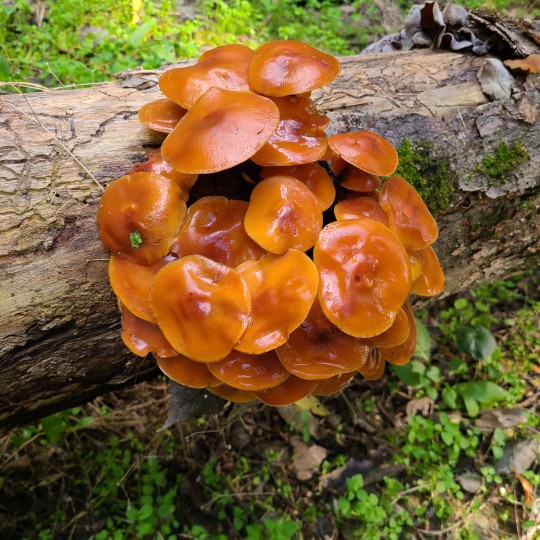
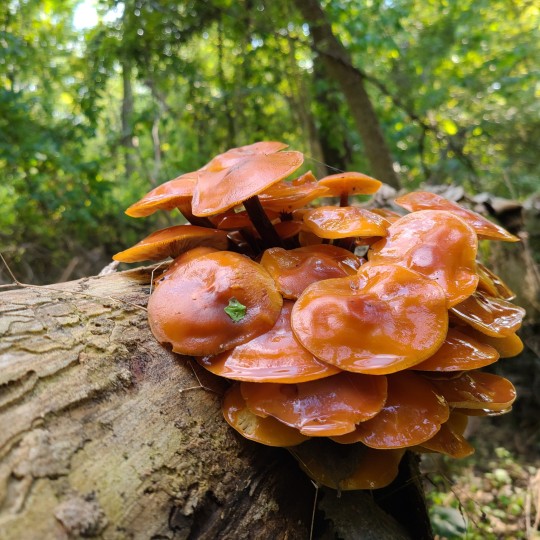
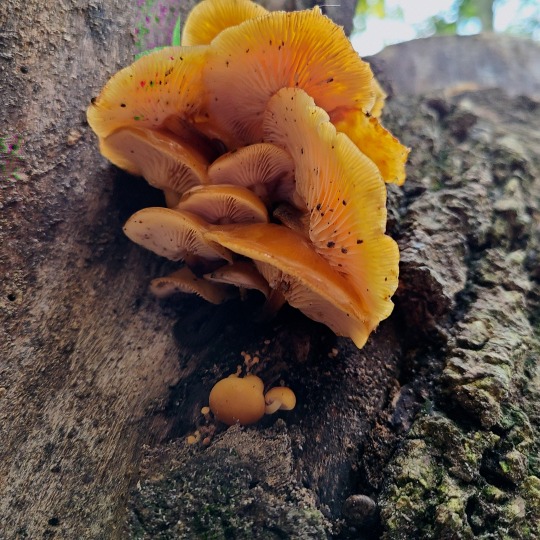
Enoki mushrooms
(Flammulina velutipes)
#I haven't actually tried them yet because I've only seen them once and would not have been able to identify them solo.#Enoki Mushrooms#Mushroom#Mushrooms#Enoki#Foraging#Foraged#Cell Phone Photography#Shadowkira Photography#My Photography#Foraging Adventures
16 notes
·
View notes
Text
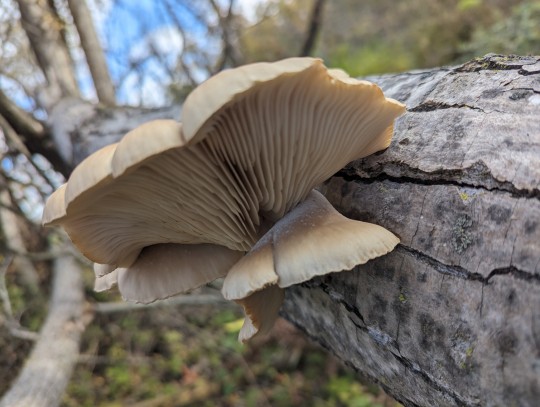
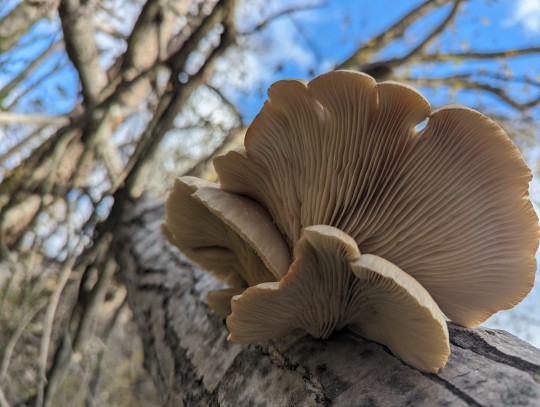
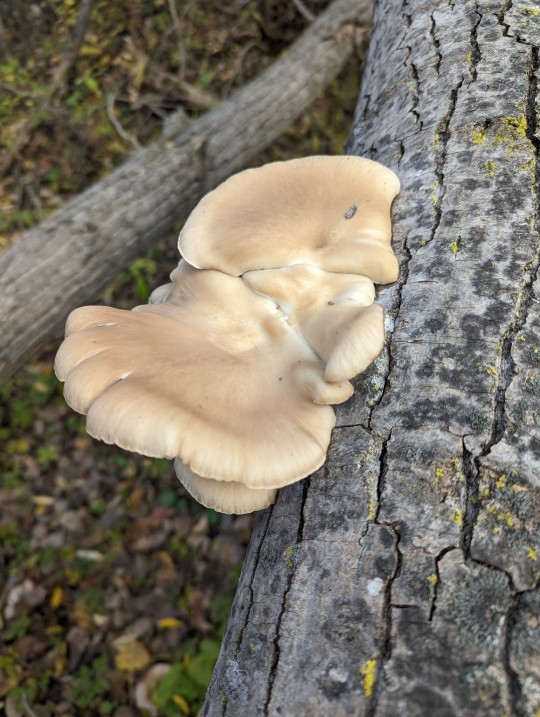
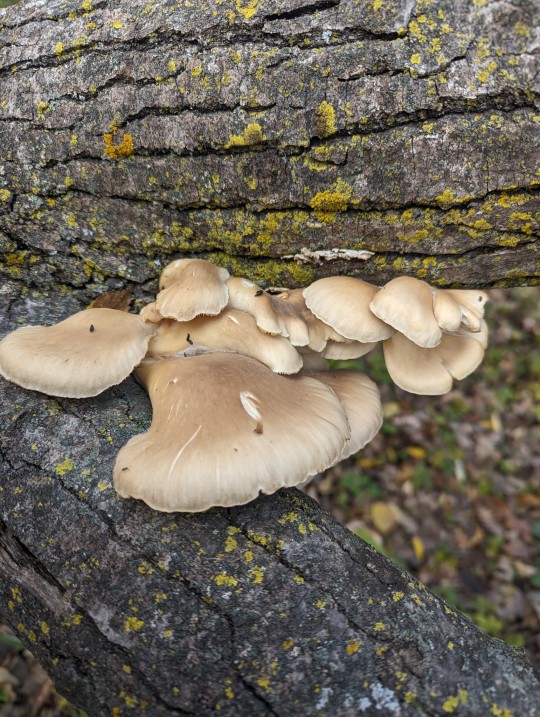
I might be getting the hang of this foraging thing😁
11 notes
·
View notes
Text

MAGNOLIA FLOWER
Magnolia flower from one of the magnolia trees in the yard.
Grandma picked it, the one she could reach, it last a few days as well.
Also grandma gave my mom a Mother's Day card early.
#foraged#pickedflower#magnolia#magnolia flower#magnolia tree#atlanta#atlanta georgia#artist#myphoto#photo#myartsyphoto#artsyphotography
2 notes
·
View notes


